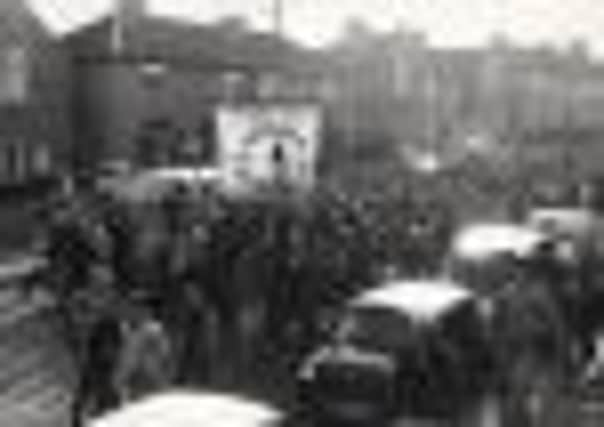Welsh pit rescue stirs memories of bitter struggle to keep Yorkshire mines open


Gleision Colliery, a small private hillside mine which has been in operation since 1993, was said today to be a colliery that has opened and shut many times, often working on the basis of when coal is found.
Today’s rescue efforts have shone a spotlight again on the demise of the country’s coal-mining industry.
Advertisement
Hide AdAdvertisement
Hide AdA year-long strike by miners nearby 30 years ago is still a topic that sparks a strong reaction.
The bitter conflict started in March 1984 and became one of the greatest trade union struggles since the 1926 General Strike, pitting the mighty National Union of Mineworkers (NUM) against Mrs Thatcher’s Conservative Government.
On March 5 1984, miners at Cortonwood colliery in Yorkshire, and others in the county, walked out.
The next day the unions were told that Cortonwood was only the first of a wide-ranging programme of closures that would see 20 pits shut and 20,000 miners lose their jobs.
Advertisement
Hide AdAdvertisement
Hide AdScottish miners joined the action and by March 12, half of Britain’s 187,000 miners had downed tools.
Up to 200,000 miners, joined by their wives and families and sometimes entire communities, campaigned for a year against pit closures, clashing with police and causing huge splits in some areas when miners started drifting back to work.
Some commentators said it was the nearest the country had come to civil war for 400 years. The strike was marred by deaths and violent scenes on picket lines, and the arrest of 11,300 miners and their supporters, including NUM president Arthur Scargill.
Police and officers on horseback fought pitched battles with pickets and working miners complained of intimidation as the dispute threw up a daily diet of violence, strife and bitterness.
Advertisement
Hide AdAdvertisement
Hide AdThe end of the strike marked the start of the demise of the British coal industry, which collapsed over the following 25 years, leaving just a handful of deep pits in the UK, with the once-mighty NUM’s membership now numbering just a few thousand.
In 1985 alone, 25 pits were shut down, including Cortonwood, the Yorkshire mine where the strike began.
As the 25th anniversary of the strike was marked in 2009, the NUM had just 4,000 members, working at a handful of pits following the rundown of the industry since the end of the strike. That number has now shrunk to less than 1,700.
The union reported a huge increase in crime, social deprivation and drug abuse in many coalfield areas in the years after pits closed.
Advertisement
Hide AdAdvertisement
Hide AdIn south Wales, signs of the devastated coal industry are still visible in the form of scarred mountain landscapes or boarded-up working men’s halls and social clubs dotted around the snaking valleys of the region.
On the 25th anniversary in 2009 Tyrone O’Sullivan said the demise of the mining industry had had a brutal affect on the local economy.
Mr O’Sullivan was famous for spearheading the re-opening of Tower Colliery in the Cynon Valley after it was closed by the Government in 1994, when 239 workers contributed £8,000 apiece of their redundancy money and made the mine profitable right up until its closure in 2008.
“The people who paid the price were the local communities; the valleys communities,” he said previously.
Advertisement
Hide AdAdvertisement
Hide Ad“You saw this after the strike with streets full of houses with ‘For Sale’ signs outside.
“The point is that they couldn’t sell them anyway as people couldn’t afford to buy them.
“The devastation that went on in the valleys, people won’t realise. What happened after the miners’ strike only proved even more so that there was a need for a strike and a need for a strike to be won.
“Don’t let anybody tell me that if we didn’t go out on strike they would not have closed the pits.”